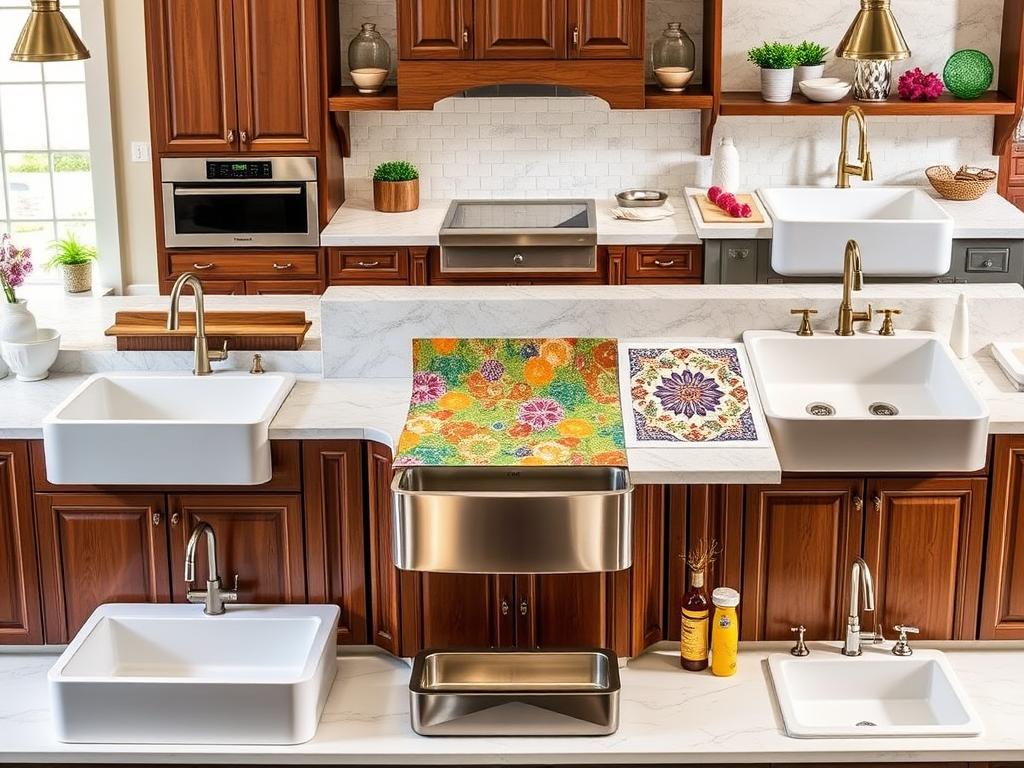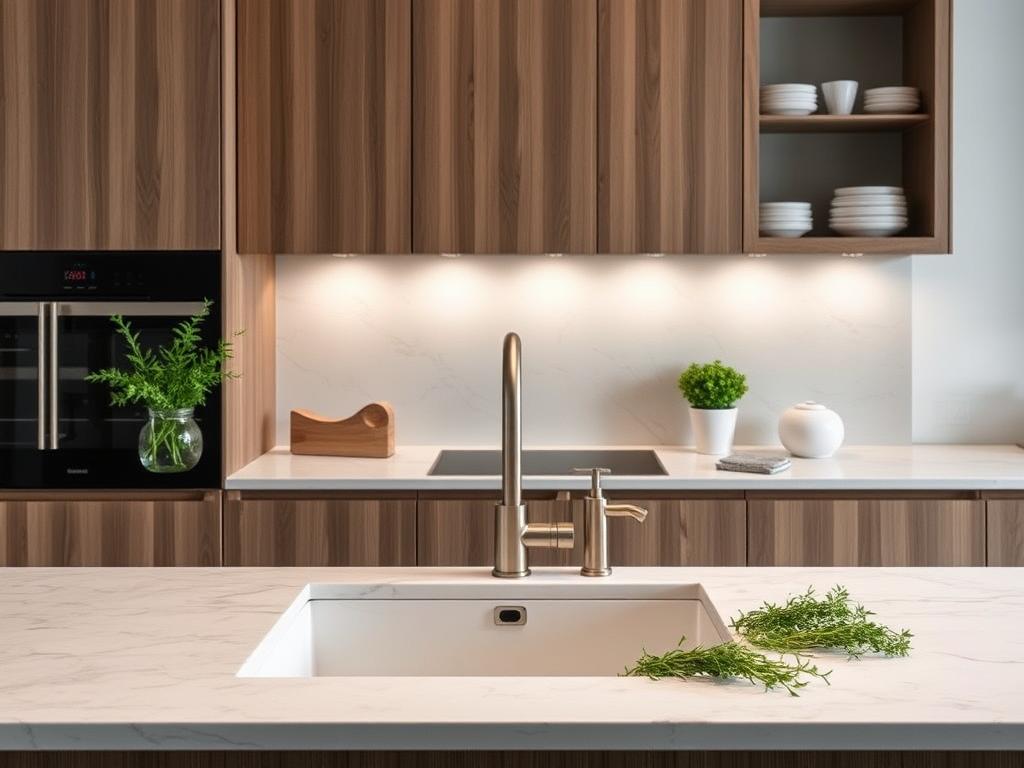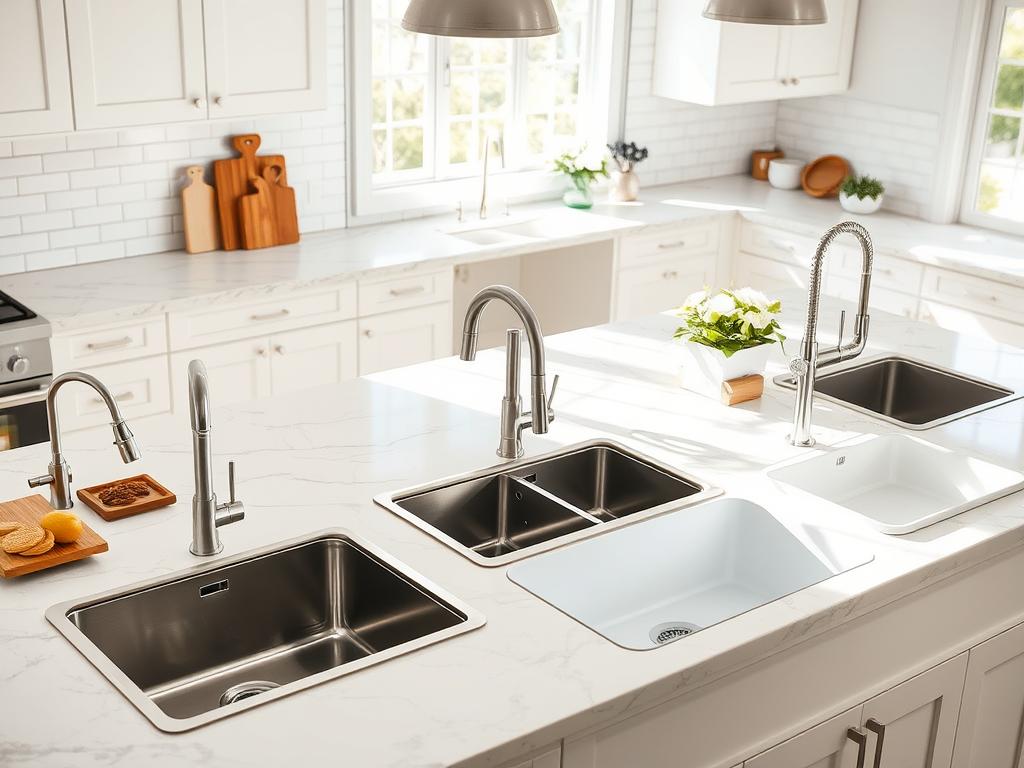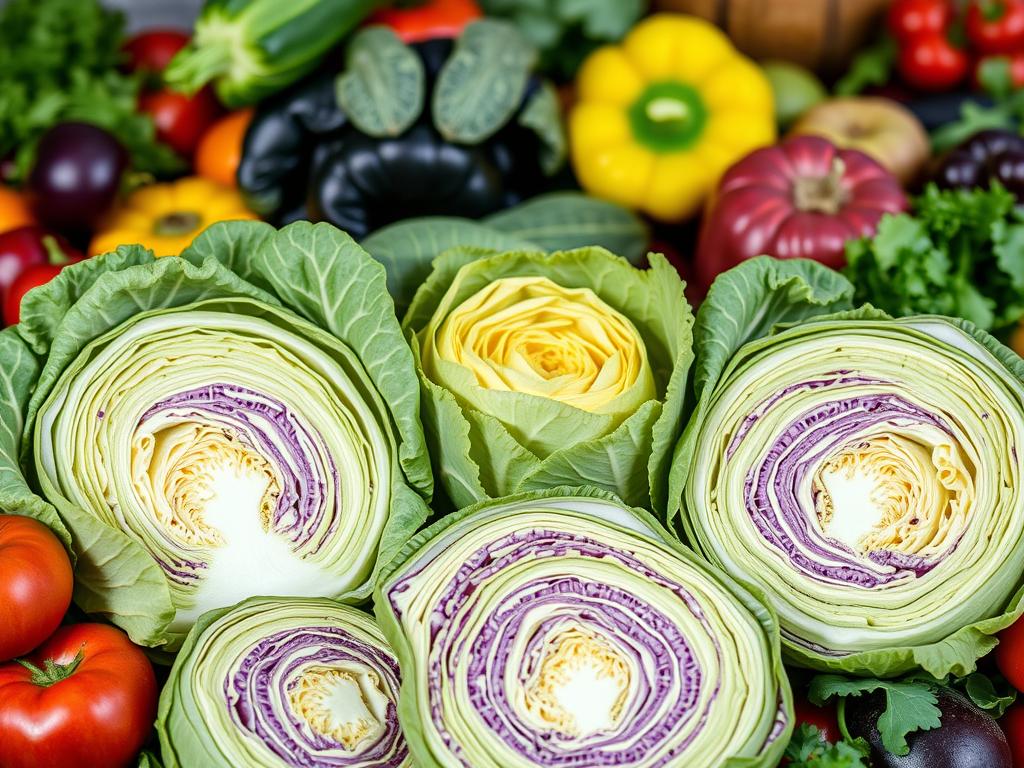Imagine standing in your kitchen, the heart of your home, where laughter echoes from family gatherings and the aroma of home-cooked meals fills the air. In moments like these, the kitchen sink becomes more than just a functional fixture; it is the silent partner in your culinary adventures and daily life. Selecting the right sink is crucial, as it impacts both the style and utility of your kitchen.
This guide will help you navigate the myriad options and features available, ensuring you discover how to pick the perfect kitchen sink that fits your lifestyle and aesthetic tastes. From choosing the best kitchen sink to understanding the differences between materials and styles, we’re here to provide you with the knowledge you need to make an informed decision.
Key Takeaways
- Consider the sink’s style and material to enhance your kitchen’s design.
- Think about basin configurations based on your cooking and cleaning habits.
- Evaluate durability and ease of maintenance when choosing a material.
- Ensure compatibility with your existing countertops and plumbing setup.
- Factor in your budget while keeping long-term value in mind.
Understanding Kitchen Sink Styles and Types
When exploring kitchen sink styles, it is essential to understand the various kitchen sink types available. This choice impacts both the functionality of the kitchen and the overall aesthetic of the space. Whether you are considering materials, mounting styles, or configurations, knowing your options aids in choosing the best kitchen sink that fits your needs and decor.
Composite vs. Stainless Steel
Stainless steel sinks dominate the market due to their *durability* and *ease of cleaning*. They typically feature various gauges of 304-grade stainless steel, ensuring a robust construction. In contrast, composite sinks, often made from a blend of granite and acrylic, offer scratch-resistant surfaces and a unique look. Each material has strengths and weaknesses notable in a kitchen sink materials comparison, thus impacting your ultimate selection.
Farmhouse vs. Undermount
Farmhouse sinks, known for their deep basins, are perfect for handling large pots and pans. They add a rustic charm to any kitchen. Conversely, undermount sinks provide a sleek, modern aesthetic, eliminating the lip between the countertop and the sink. Popular countertop materials for undermount sinks include EpiStone and granite. *Choosing the best kitchen sink* between these options can significantly enhance your kitchen’s look and functionality.
Double vs. Single Basin
Understanding the differences between double and single basin sinks can guide your choice based on your cooking and cleaning habits. A typical single bowl kitchen sink measures 22 inches (width) x 24 inches (length) x 8 inches (depth). This provides ample space for washing larger items. Meanwhile, a double basin kitchen sink can come in equal sizes measuring 33 inches (width) x 22 inches (length) x 8 inches (depth) or an offset design measuring 31 inches (width) x 20 inches (length) x 8 inches (depth). These configurations allow for multitasking, essential in a bustling kitchen environment and influence your final decision when *choosing the best kitchen sink*.

| Sink Type | Dimensions (Width x Length x Depth) | Advantages |
|---|---|---|
| Single Basin | 22″ x 24″ x 8″ | Spacious for large items |
| Double Basin (Equal) | 33″ x 22″ x 8″ | Multitasking capability |
| Double Basin (Offset) | 31″ x 20″ x 8″ | Versatile space for dishes |
| Farmhouse | 30″, 33″, or 36″ width | Deep, charming design |
For more detailed information about sink types and styles, visit this guide that outlines various kitchen sink options.
Key Features to Consider When Choosing a Sink
Selecting the right kitchen sink involves understanding several key features. These features can dramatically impact functionality and aesthetics, guiding homeowners through the wide variety of options. By considering depth and size, material durability, and faucet compatibility, you can make an informed decision that fits your lifestyle.
Depth and Size Matters
The depth and size of a kitchen sink are critical factors when choosing the perfect model. Standard kitchen sinks typically vary in width from 24 to 36 inches and have depths between 8 to 10 inches. Dual basin sinks are popular, allowing for multitasking while washing dishes. Single basin sinks, such as farmhouse designs, cater to those who require space for larger pots and pans. Integrated and corner sinks can maximize space efficiency in smaller kitchens, offering sleek aesthetics and functional advantages.
Material Durability and Maintenance
Material durability plays a significant role when selecting a kitchen sink. Stainless steel remains the most popular choice due to its combination of durability and low-maintenance characteristics. Cast iron, copper, and fireclay offer unique aesthetic benefits and robust durability but vary in maintenance requirements. Granite composite sinks are known for their resistance to scratches and stains, making them a durable choice for busy kitchens. Assessing the durability and maintenance needs of each material will guide you in making the best choice for your household’s demands.
Faucet Compatibility
Understanding faucet compatibility is essential when selecting a kitchen sink. Consider the mounting holes available for fixtures, as well as the compatibility with your chosen faucet type. Standard options include single-hole, four-hole, or even integrated faucets. By ensuring your selected sink works with your preferred faucet, you can avoid installation challenges and enhance overall functionality. Gathering tips for selecting a kitchen sink before making a purchase will ensure all elements work harmoniously together.
Aesthetics: Choosing a Sink That Matches Your Kitchen
Selecting a kitchen sink goes beyond functionality; the kitchen sink aesthetics play a vital role in how your kitchen feels and looks. It’s important to choose a sink that harmonizes with your overall design vision. From timeless materials to stylish finishes, every detail matters in making a lasting impression.
Color and Finish Options
When exploring color and finish options, a variety of materials such as stainless steel, composite granite, and fireclay are available to cater to different tastes. Stainless steel sinks are popular for their durability and easy maintenance, while composite granite sinks offer a range of colors suited for modern kitchens. Fireclay sinks provide an elegant touch, though they are heavier and more expensive.
Coordinating with Kitchen Décor
Coordinating kitchen décor with your sink enhances the overall look of your space. Farmhouse sinks add rustic charm, while undermount sinks lend a sleek, contemporary style. Opt for a design that complements your countertops and cabinetry. Let’s Get Stoned offers a variety of styles that cater to diverse decorative themes, ensuring a seamless integration of practicality and style.
Hooks and Accessories
Consider the practical elements like kitchen sink accessories that can enhance both functionality and aesthetics. Workstation sinks come equipped with built-in accessories for efficient multitasking. Choosing the right accessories not only maximizes your workflow but also matches your style preferences, making your kitchen both beautiful and practical. Explore more about incorporating these details into your new home through resources like helpful guides on home decor.

Installation Considerations for Your New Sink
Proper installation of a kitchen sink involves multiple factors that can influence performance and convenience. Understanding the differences between DIY sink installation and professional installation can help ensure that your new sink meets both functionality and aesthetic requirements. Additionally, comprehending the plumbing requirements and countertop compatibility is key to a successful installation.
DIY vs. Professional Installation
For those with some handy skills, DIY sink installation can be a rewarding task. Yet, it requires familiarity with plumbing requirements, tools, and the installation process. On average, the installation can take a few hours, depending on your experience level. For individuals unsure about tackling plumbing aspects, hiring a professional installation could save time and prevent potential issues, like leaks.
Plumbing Requirements
Before beginning the installation, evaluate your existing plumbing layout. Ensure compatibility with the new sink regarding drain location, faucet placement, and water supply lines. Standard base cabinets vary from 24 to 36 inches in depth, which influences the sink size. Additionally, consider the materials, as some sinks may require specific plumbing fixtures to function properly. There are important considerations to keep in mind, including:
- Testing for leaks after installation is crucial to ensure connections are secure.
- Utilizing the correct sealing method, be it silicone caulk for edges or plumber’s putty for drains.
- Basic plumbing tools like an adjustable wrench and screwdriver are necessary for installation.
Countertop Compatibility
Compatibility between the sink and countertop materials plays a significant role in the installation process. Undermount sinks, for instance, require countertops made of strong materials like granite. Top-mount options are often easier to install and suit a variety of countertop types. Furthermore, some finishes, such as composite or fireclay, offer unique visual appeal but may need special care during installation to avoid damage.

Understanding these sink installation considerations can guide your project, whether you opt for a DIY approach or decide to enlist a professional plumber for assistance. This knowledge enhances your installation experience and results in a polished, functional outcome for your kitchen.
Budgeting for Your Kitchen Sink Purchase
Understanding the financial implications of selecting a kitchen sink can make budgeting for kitchen sink purchase a smoother process. Knowing price ranges for various sink styles helps streamline the decision-making. This section breaks down the different aspects of kitchen sink pricing to aid in your selection.
Price Ranges for Different Styles
Kitchen sink pricing varies based on material, style, and brand. The most common materials include:
| Material | Durability | Cost Range |
|---|---|---|
| Stainless Steel | Excellent | Affordable ($100 – $600) |
| Composite (Quartz, Granite) | Very Good | Mid-range to High ($300 – $900) |
| Cast Iron | Exceptional | High ($500 – $1,500) |
| Fireclay | Highly durable | High ($700 – $2,500) |
| Copper | Antimicrobial | High ($600 – $2,000) |
Long-Term Value vs. Initial Cost
When considering kitchen sink options, the initial cost can be tempting, but evaluating long-term value versus initial cost is crucial. For instance, stainless steel offers an affordable entry price with excellent durability, making it a smart investment. In contrast, options like fireclay and copper may require a higher upfront expenditure, yet they provide unique aesthetics and longevity that could justify their costs over time.
Where to Find Deals and Discounts
Finding sink deals can significantly reduce your overall kitchen renovation budget. Checking home improvement stores during seasonal sales or exploring online marketplaces often yields great savings. Additionally, consider promotional offers from brands known for quality kitchen sinks. For more extensive budget-savvy tips, visit this comprehensive guide on budget management.
Final Tips for Selecting the Ideal Kitchen Sink
When it comes to selecting the ideal kitchen sink, starting with a list of must-have features can significantly streamline your decision-making process. Consider factors like size, style, and functionality that align with your needs. For example, if you often wash large baking pans, a farmhouse sink may offer the space you require. Additionally, think about whether a single or double basin suits your cooking habits best; double basin sinks can provide a spacious and comfortable experience while washing bigger dishes.
Make a List of Must-Have Features
Reflecting on your lifestyle needs is equally important. Are you frequently cooking for a large family, or do you mostly prepare meals for one? Your culinary habits can dictate the type of sink that will work best for you. For instance, those who prefer minimalistic designs might opt for integrated sinks, while those needing durability may look towards stainless steel or composite options, which are heat and stain-resistant.
Think About Your Lifestyle Needs
Lastly, do not overlook the importance of a kitchen sink warranty and available support. Evaluating the manufacturer’s reputation can provide peace of mind in case of any issues. Remember, investing time in researching your options may yield a sink that not only enhances your kitchen’s aesthetic but also complements your everyday life. For more detailed advice on this selection process, visit this helpful guide.











